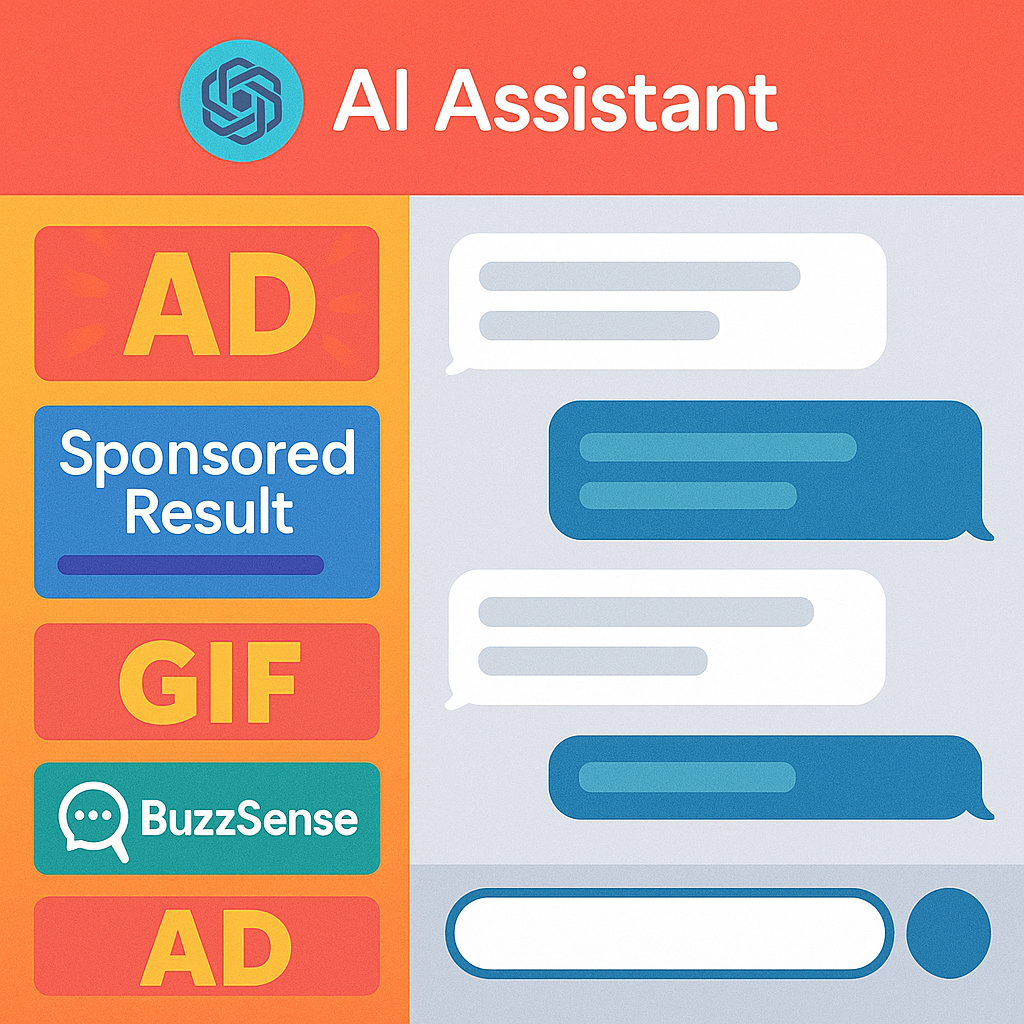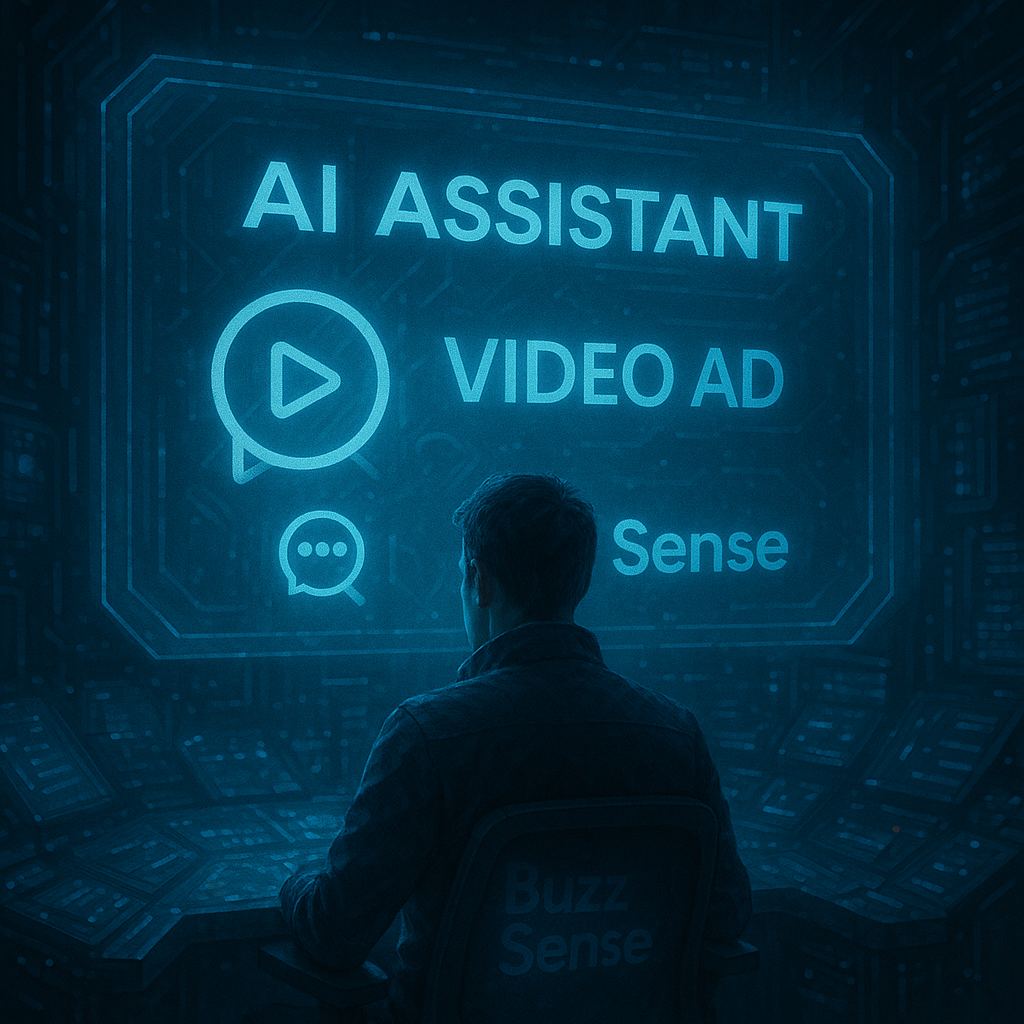Advertising on AI Assistants is Coming, but without its Ethical Concerns.
Written by Ahmad Alobaid Updated 2 November 2025 7—minute read
It is speculated that advertisments are coming for AI assistants and agents. But are they coming dressed in the classic way of banners and ad spaces? Or are they coming integrated into prompt responses? In this article, we talk about the classic ads, which we refer to as explicit, as users know that these are ads. The second category of ads is when the users are not aware that they are consuming ads; we call them implicit ads. Obviously, they do not come without their ethical concerns. We discuss those concerns and suggest ways to mitigate them.
Content
Ads in AI Assistants and Agents
![]()
Advertisements might be coming to AI agents and assistants like ChatGPT, Gemini, Claude, Preplexity, Gork, and DeepSeek.
This is not an unexpected step due to the high cost of running Large Language Models (LLMs). The cost is too high, and companies are looking for ways to reduce it, which is in the millions (see epoch.ai, forbes, techcrunch, and reuters). Many went through the subscription route, which might’ve been the most feasible option to start making money. However, it doesn’t seem to be enough to cover all the costs and get a good return on investment (ROI) soon. Altman commented that they are even losing money on the pro 200$ plan because it turned out people were using it more than expected. Anthropic is making 80% of its revenue from enterprise and developers paying per token , which is a way to measure the usage in technical use cases. Many AI companies are investing heavily in infrastructure to train their models, which seems to be the main reason for the high expenditure.
One of the expected ways to increase revenue is to include advertisements, as Google is doing in search results. Companies invest in sponsored advertisements on Google to drive traffic to their website and increase sales. When relevant, the links to these companies’ websites are shown with a “Sponsored” tag. They recently changed by adding a section at the beginning of the research results titled “Sponsored results”.
We talk about different ways to include Ads that might be utilized by companies to include ads in their AI Assistants or Agents.
Ads in AI Results
The results may appear on the side of the page like the classical flashing ads, which is unlikely, or they can be more incorporated into the interface. Maybe even as part of the results. Below, we expand on the different ways they might be incorporated.
Explicit Ads

The first two, and least likely, are the classic ads, which probably won’t be included by the main providers. The rest are more subtle, as Google used to show sponsored results, or as ChatGPT shows the sources after the paragraphs in its responses. The explicit ways to add ads to AI Assistants are:
- Ads Spaces. These are flashy images (animated GIFs) with very bright colors that constantly change to grab the user's attention, hoping users will click them. They've been around for a long time, yet are being used today either due to their effectiveness or ease of use. Sometimes these ads are static PNG or JPEG images.
- Banners. They are also considered classic ads that have been used for years. Banners are rectangular windows that have text and sometimes images, which are often shown as windows at the bottom of websites or apps. They often have an X button in the top-right corner that allows users to close them.
- Sponsored Results. Links to sponsored products or services are shown before the response, and are explicitly marked with the "sponsored" tag, similar to Google's sponsored links. They can be in the form of text, images, or both, with links to the sponsored content.
- Sponsored Sources. At the end of the response or paragraph, links to sponsored materials are added, similar to how ChatGPT shows the sources of its results.
Implicit Ads
These methods are more subtle in introducing ads that it is not obvious to the users that they are consuming ads. We list the main ways to include implicit ads below.
- Injecting sponsored content. It is to include the sponsored content in the results. Imagine the user asks for sports shoes, and the AI assistant recommends Brand A and Brand B. Since Brand C is sponsored in the AI assistant, it will be included in the results, so the user will see Brand C alongside Brand A and Brand B. Note that there is no indication that Brand C is sponsored.
- Suggesting sponsored content. It is to add an option to buy without changing the results. After the AI agent displays the results, it might ask the user to buy the relevant sponsored product or service. For example, if the AI agent were asked about the best hotels in Kuwait, it would suggest Hotel A and Hotel B. Then, the AI agent would add something like "would you like me to book Hotel C", which is sponsored, while the initial results of the user query "best hotels in Kuwait" only showed Hotel A and Hotel B.
- Withholding competition. Imagine a company is selling a protein shake, Y, and their biggest competitor is protein shake Z. In order to make their biggest competitor appear less in AI responses, they do a “reverse sponsorship” so that their competitor, Z, does not appear when people ask for protein shakes.
There might be other versions combining different techniques of smart advertisements as well. Some might be acceptable, while others might be seen as misleading or exploitative. We address relevant concerns next.
Video Ads

Another approach to make more money from ads is to only show results or allow users to interact with the system when the user views one or more ad videos. Sometimes the videos show when the user wants to use a specific functionality, during website load, or at app startup, so every time the user opens the website, they have to watch the ad video in order to start using the app or website.
For the AI assistants and agents, adding video ads can be implemented in the following ways:
- On Startup. When the user opens the AI assistant website or app, they must watch a video to be able to use and interact with the system. This has been implemented in other domains (e.g., CamScanner).
- Selective Interaction. When using a certain model, or functionality, or after the i-th prompt, the video ad would pop up, and the user would have to watch the video to continue interacting with the AI Assistant.
- Uncover Unsponsored Content. A message or small icon is shown next to the response, indicating that sponsored material is included. The user can choose to remove the sponsored material by watching an ad video.
Some might have more forgiving ads that let the user skip the video right away, while others might require the user to watch the whole video or X amount of it. Google calls them skippable and non-skippable in-streams. There might be other variations as well, see here and here.
Concerns of Adding Ads to AI Responses
Many ethical and practical concerns are expected to arise from the integration of Ads into AI assistants and agents.
- Transparency. Some might argue that there is already opaqueness in the underlying technologies, including AI-related ones, that companies use to gain a competitive advantage. Organizations might choose to do so to prevent (or reduce) the exploitation of their technologies and to reduce the risk of others taking advantage of the system for financial gain, hacking, inflating metrics, and more.
- Misleading Users. Asking for hotels with a sea view, but the sponsored option that was recommended by the AI agent doesn't have it. This can even undermine the utility and reliability of AI assistants and agents.
- Ethics and Harm. Ethical issues can arise due to the AI assistant’s suggestions that might steer people away from the best option to a less optimal one. Sometimes it can even cause harm. This can be of greater concern if the user has an allergy, for example, and the sponsored medicine might cause them a severe allergic reaction. Also, a competitor might use the reverse-sponsoring option to hide a better drug alternative or a more effective one in treating a disease, so their products are sold more.
- Narrative Control. Several claims have been raised about AI products controlling certain narratives, steering people towards one political party or narrative over another. Imagine a politician pays to praise their party while downplaying their competitors, withholding their accomplishments, or inflating their mistakes. For example, Stanford University published an article stating that many language models are actually left-leaning, according to many of the subjects involved in the study.
- Security concerns. As injection (embedding code into inputs to trick the system into doing things it is not supposed to do) attacks in SQL and AI assistants remain a threat. SQL Injections and Prompt Injections might also be used to trick the system into disclosing internal details and, more dangerously, to alter the results, sometimes without even triggering alerts, as these results might look benign to the guardrails.
- Altering GEO results. Generative Engine Optimization (GEO) platforms track the visibility of brands. It is the new SEO for AI Assistants. They use signals and recommendations by GEO platforms (e.g., buzzsense.ai ) to help them rank better in AI assistants and agents. Injecting sponsored brands (or using reverse-sponsorship) could affect businesses' tracking of their visibility on GEO platforms, providing inflated or mixed signals that could alter their strategy and potentially cost them money. In such cases, businesses and GEO platforms would need to take that into account and develop strategies to address these artificial alterations.
Mitigation Strategies

Providers of AI assistants and agents might need to inform users about the injection of sponsored materials in prompt results if they are doing so. Being transparent that sponsored products, services, and websites are being favoured or inserted into the responses. They might even mention that some relevant information is being withheld and that they have to pay to see it. This can even be seen as exploitive, and ethical concerns remain, but it is preferred over not disclosing that information and misleading users. They might decide to follow the explicit ads route, showing the sponsored products, services, and websites with the “sponsored” tag. More concretely, the following mitigation strategies might provide some balance:
- Transparancy of information being withheld. This means communicating to the users that some of the information is not shared. They can say something about how this helps pay for the platform, or they may find another way to communicate this to their users. Burying this information on the terms and conditions page or exploiting loopholes might be viewed as exploitive or unethical.
- Explicitly tagging sponsered material. Whether the sponsored materials address the user query perfectly or only partially, showing sponsored material that wouldn't otherwise appear might be seen as responsible and trustworthy by users.
- Offering unsponsored results to programming interfaces. Provide an ad-free option for programming interfaces as a way for them to have cleaner data for their GEO data or to show the sponsored materials in different ways if they decide to include the “sponsored” tag.
A much easier, but maybe questionable approach is to state that some information might be withheld or included from sponsored materials, or maybe indicate the specific information that is withheld (e.g., “withheld information can be seen at the link below”) or injected into the results (e.g., with a tag or a tiny indicator). Providers might also add something like “to help us make this platform more affordable”. Some might even offer a limited sponsor-free plan, higher subscription fees, or higher per-token pricing for programming interfaces.

